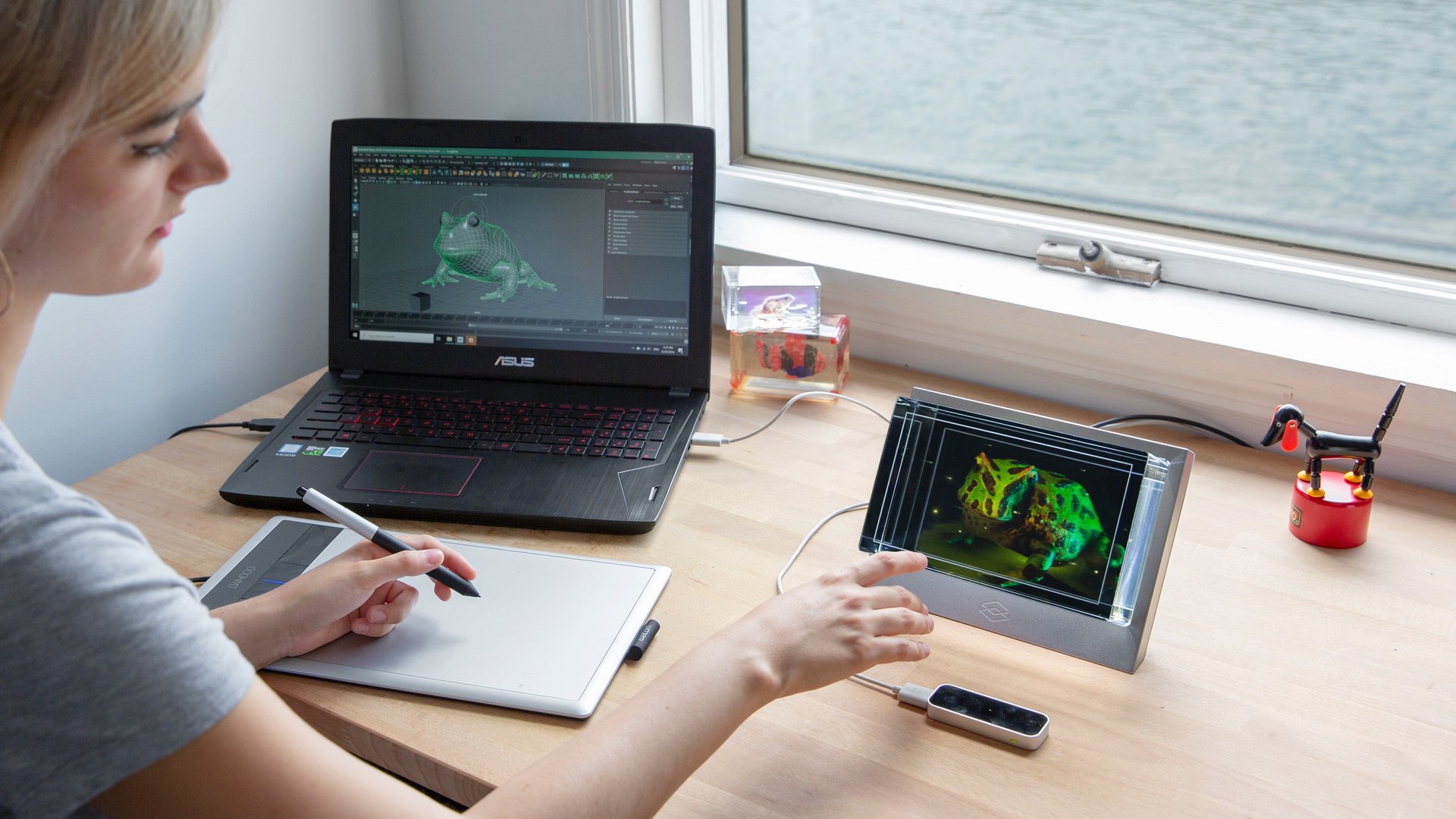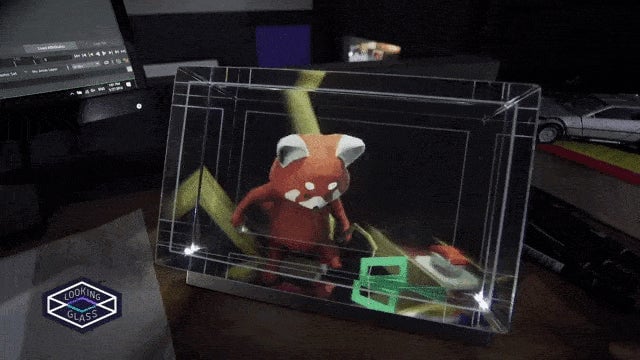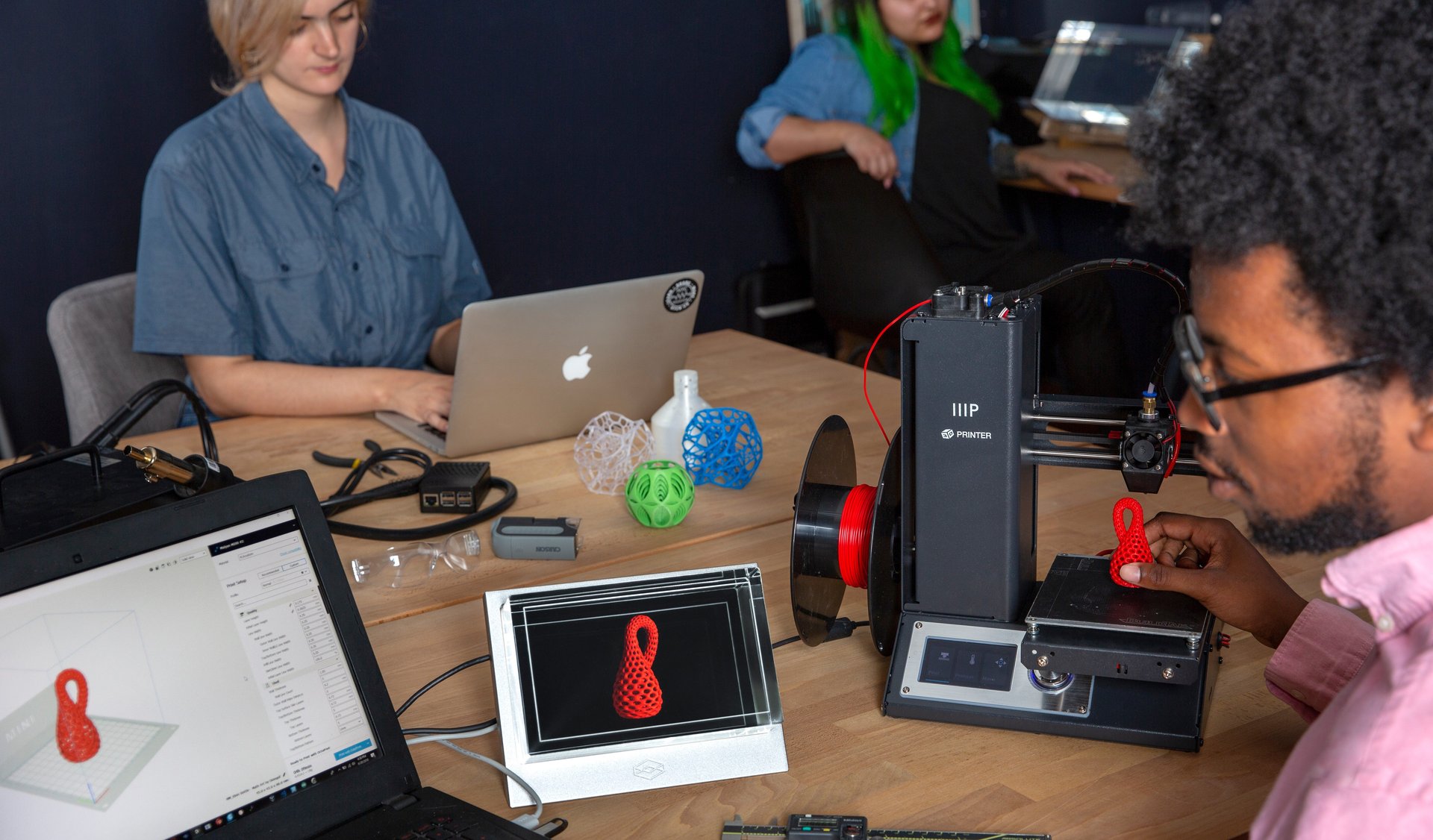Your next computer screen could be holographic
“Help me Obi-Wan Kenobi, you’re my only hope.”


“Help me Obi-Wan Kenobi, you’re my only hope.”
If you’ve ever wished you could recreate the iconic scene in Star Wars, where Luke Skywalker discovers a holographic message of Princess Leia, pretty much kicking off the entire franchise, you can now get a lot closer to that dream. Unfortunately, you won’t be using an R2-D2 astromech droid to do so, but rather a new type of display developed by Looking Glass Factory, a Brooklyn-based startup.
Today, July 24, the company announced the eponymous Looking Glass, a completely self-contained display for viewing three-dimensional, holographic content. Think of it like a second screen for your computer that allows you to view objects in three dimensions, without the need to put on a clunky headset.
Founded in 2014, Looking Glass has been toiling away to realize the dream of science-fiction writers (and Victorian inventors), where we interact with three-dimensional objects in the way we do with tablets or other touchscreens today. It produced an interactive display last year that it showed to Quartz, where users could manipulate virtual objects in a 3D space. Its latest product is meant to be a little less cumbersome.

The startup’s founder, Shawn Frayne, told Quartz he envisions the display sitting on the desk of any 3D animator. Those at Pixar working on the next exceedingly lucrative sequel could set up a Looking Glass as a second screen, and when they want to see how the 3D model they’re working on actually looks, they can send it to the device.
Beyond designers, the new display could be useful to anyone who would benefit form seeing things in three dimensions. It could replace the 2D screen used to view MRI and CAT scans in doctors’ offices, giving practitioners and patients better views into the body. It could be used by engineers to see how their product looks before sending it off to have a costly prototype built, or slowly 3D-printed.

The Looking Glass costs $600 for a 8.9-inch display (around how much a decent VR setup currently costs), and $3,000 for a 15.6-inch version. The displays only require two cables (an HDMI and USB) and a decently powered laptop to work, and can either be controlled by a mouse and a keyboard, like a regular screen, or connected up to a wireless controller, like a Leap Motion. Both models are on sale on the company’s site from today.
Frayne said he expects the display to find a home in commercial settings before it finds a way into our homes, the eventual goal. He’s had conversations with companies, games-makers, and artists, and believes that, although there is enjoyment and value to be found in VR and AR headsets, their benefits are often outweighed by how isolating the experiences are, and how lazy we can be.
By creating something that looks similar to the computer screens we’ve plopped ourselves in front of for the last 20 years, we wouldn’t have to radically change our consumption behavior to enjoy a completely new way of looking at content. Looking Glass’s displays can also be viewed by multiple people at once, unlike a VR headset, making them far more useful for collaborative work in 3D.